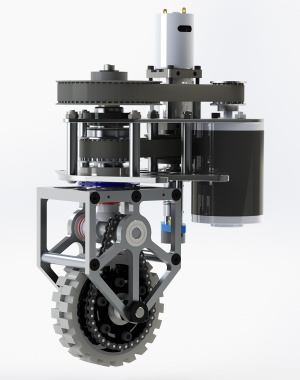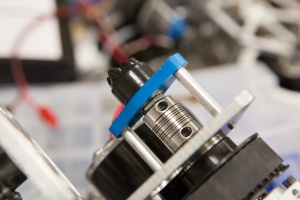DEWBOT XI Drive Train
With the loss of Ben Kellom as mentor and Edgetech as sponsor, we redesigned our swerve module to reduce the machine time requirements and to bring as much of the machining in-house as practical.
Contents
Reduced Machining
During his four years as a 1640 mentor, Ben Kellom made enormous contributions to the team; especially (but not limited to) our machining processes, quality, equipment, workflow, and (most importantly) how we think about machining as we design our robots. In his role, Ben was a key driver in the development of our swerve drive technology. Ben's employer, Edgetech, graciously sponsored the team by machining the pivot (and other) parts.
With Ben's departure, we revised the pivot design with an objective of reducing the machine time required to produce these, making the following changes:
- Pivot side plates are 2-D (0.250" thk)
- Pivot side plates were cut via water jet (old plates had to be CNC machines and started with 0.500" thk plate)
- Pivot Braces replaced by 7075 Al stand-off; these stand-offs were manufactured in-house
- Pivot Tubes were manufactured in-house
- Pivot Module top and bottom plates were cut via water jet
Aggregate sponsor machine time was reduced by more than 50%.
Sensors
Once again we used BI Technologies Magnepot Hall Effect Potentiometer Part # 6127V1A360L.5FS. Cost is up a bit ($12.32 each). These sensors have performed well for us since our adoption of them in 2012.Sensors were coupled to the steering drive shaft via clamp-type flexible helical beam couplings (Ruland FRC12-4-4-A from FIRST Choice). The couplings reduced the potential for damaging the sensors due to misalignment. Clamp couplings eliminate the slippage problems experienced with set-screw couplings.

